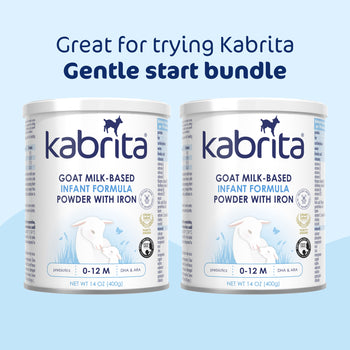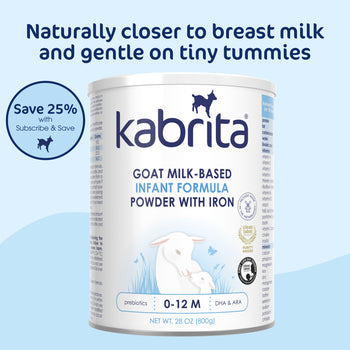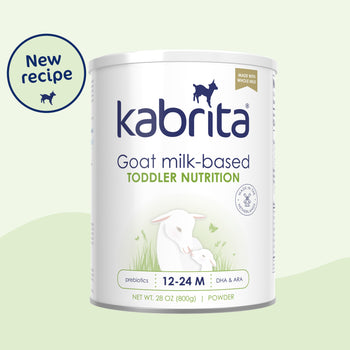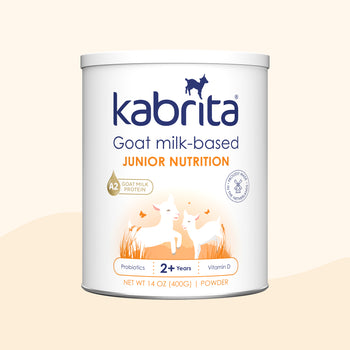Behind the Label: Folic Acid

Kabrita Goat Milk Toddler Formula is fortified with 22 vitamins and minerals, including folic acid. Goat milk alone is not nutritionally suitable for babies – in particular, it lacks adequate folate to meet their needs.
What is Folic Acid?
Folic acid is a form of folate that is used in most supplements, infant formula, and fortified foods. Since 1998 in the US, bread, cereal, flour, cornmeal, pasta, rice and other grain products have been fortified with folic acid – a measure that has been associated with a decrease by 35% of babies born with neural tube defects.
Folate refers to the form of this vitamin naturally occurring in foods. It can be found in beef liver, a variety of dark leafy green vegetables (such as spinach or mustard greens), black-eyes peas, asparagus, and brussels sprouts, among other whole foods, fresh fruits and vegetables.
Why is Folic Acid added to Baby Formula?
Folate is involved in a number of critical body functions; it supports the production of DNA, as well amino acids (the building blocks of protein). Folate is also essential for regulating healthy cell division, and is an important part of preconception health.
Inadequate folate intake may lead to megaloblastic anemia, which may be associated with symptoms such as fatigue, weakness, and shortness of breath.
Folic acid is a version of folate designed to remain shelf stable in infant formula and other foods. This means the vitamin does not degrade within a product’s shelf life.
Folic Acid in Formula is Regulated
All infant formula in the US must meet FDA-mandated nutrient guidelines.
Folic Acid is the FDA-approved form of this vitamin for use in infant formula; all infant formula must contain a minimum of 4 mcg of folic acid per 100 kcal.
5-methyltetrahydrofolate (5-MTHF) and folinic acid, two other forms of this vitamin, are not currently approved for use in infant formula in the United States.
Is Folic Acid right for Everyone?
In order to be utilized by the body, folic acid must be transformed into its active form, called methyltetrahydrofolate (MTHF). A critical enzyme, methylenetetrahydrofolate reductase (MTHFR) is required to transform folic acid into MTHF.
In some individuals, a gene mutation leads to changes in expression of the MTHFR enzyme, and a decreased ability to convert folic acid into MTHF.
The number of individuals affected by this gene mutation varies and is, currently, not fully known. It you are concerned about your personal risk, or that of your family, it’s always best to discuss with your healthcare provider.
How much Folic Acid does Kabrita Goat Milk Toddler Formula contain?
Children aged 1-3 years require 150 mcg of dietary folate or 90 mcg of folic acid from fortified foods or dietary supplements consumed with foods daily.
While fluid goat milk contains only 2 mcg of folate per 1 cup (8 oz), Kabrita Goat Milk Toddler Formula delivers 24 mcg of folic acid per 1 cup (8 oz).
We welcome and appreciate feedback from our community and will continue to work to develop products to meet the unique needs of all families.
Behind the Label is an ongoing series looking at the ingredients we choose to include in Kabrita products, in order to help parents make nutritional decisions for their family with confidence and joy.
Originally published on: 5/20/2016



